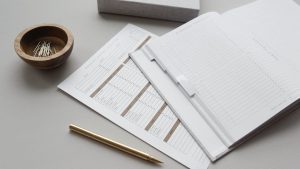Forex, or foreign exchange, trading is the buying and selling of different currencies in order to make a profit. It is a popular way to invest and trade because of the potential for high returns, but it also comes with risks. If you are new to forex trading, it can be overwhelming and confusing. However, with a step-by-step guide, you can learn how to trade forex successfully.
Step 1: Learn the Basics
Before you start trading forex, it is important to learn the basics. This includes understanding what forex is, how it works, and the terminology used. Some important terms to know include:
– Currency pairs: Forex trading involves the buying and selling of currency pairs. The first currency in the pair is the base currency, and the second currency is the quote currency. For example, in the EUR/USD pair, the euro is the base currency and the US dollar is the quote currency.
– Spread: The spread is the difference between the bid price (the price at which you can sell a currency pair) and the ask price (the price at which you can buy a currency pair).
– Pip: A pip is the smallest unit of measurement in forex trading. It is usually the fourth decimal place in a currency pair. For example, if the EUR/USD pair moves from 1.2000 to 1.2010, it has moved 10 pips.
– Leverage: Leverage allows you to control a large amount of money with a small amount of capital. For example, with a leverage of 100:1, you can control $100,000 with just $1,000.
Step 2: Choose a Broker
In order to trade forex, you will need to use a broker. A broker is a company that provides a platform for you to trade on. When choosing a broker, it is important to consider factors such as:
– Regulation: Make sure the broker is regulated by a reputable authority, such as the Financial Conduct Authority (FCA) in the UK or the National Futures Association (NFA) in the US.
– Fees: Look at the fees the broker charges, such as the spread, commission, and overnight financing charges.
– Trading platform: Choose a broker with a user-friendly trading platform that suits your needs.
– Customer support: Make sure the broker offers good customer support, such as 24/7 phone and email support.
Step 3: Open a Trading Account
Once you have chosen a broker, you will need to open a trading account. This involves providing your personal details and verifying your identity. You may also need to provide proof of address and proof of income. Once your account is approved, you can deposit funds into it.
Step 4: Practice with a Demo Account
Before you start trading with real money, it is a good idea to practice with a demo account. This allows you to get a feel for the trading platform and test your trading strategies without risking any money. Most brokers offer demo accounts that simulate real market conditions.
Step 5: Analyze the Market
In order to make informed trading decisions, you need to analyze the market. This involves studying the charts and using technical and fundamental analysis. Technical analysis involves looking at the price charts and using indicators to identify trends and patterns. Fundamental analysis involves studying economic and political events that can affect the currency markets.
Step 6: Place a Trade
Once you have analyzed the market and decided on a trading strategy, you can place a trade. This involves choosing a currency pair, deciding whether to buy or sell, and setting your stop loss and take profit levels. A stop loss is a level at which your trade will be automatically closed if the market moves against you. A take profit level is a level at which your trade will be automatically closed if the market moves in your favor.
Step 7: Manage Your Risk
Risk management is an important part of forex trading. This involves setting your risk/reward ratio, using stop losses, and managing your position size. Your risk/reward ratio is the amount of money you are willing to risk on a trade compared to the potential profit. For example, if you are willing to risk $100 to make $200, your risk/reward ratio is 1:2. Using stop losses and managing your position size can help you limit your losses and protect your capital.
Step 8: Monitor Your Trades
Once you have placed a trade, you need to monitor it. This involves keeping an eye on the market and adjusting your stop loss and take profit levels if necessary. You should also be prepared to close your trade if the market moves against you.
In conclusion, forex trading can be a profitable and exciting way to invest, but it also comes with risks. By following these steps, you can learn how to trade forex successfully and manage your risk effectively. Remember to always do your research, practice with a demo account, and never risk more than you can afford to lose.





